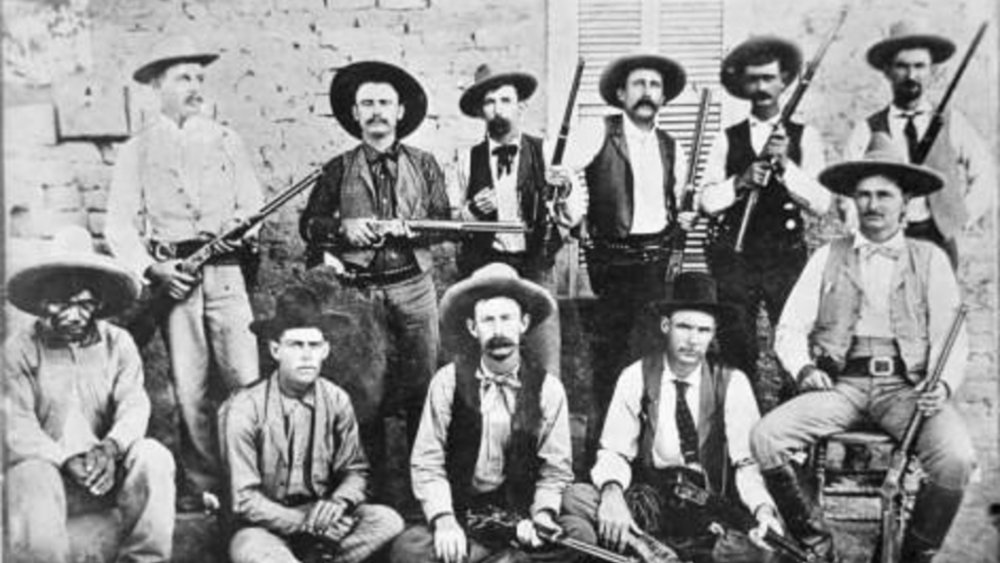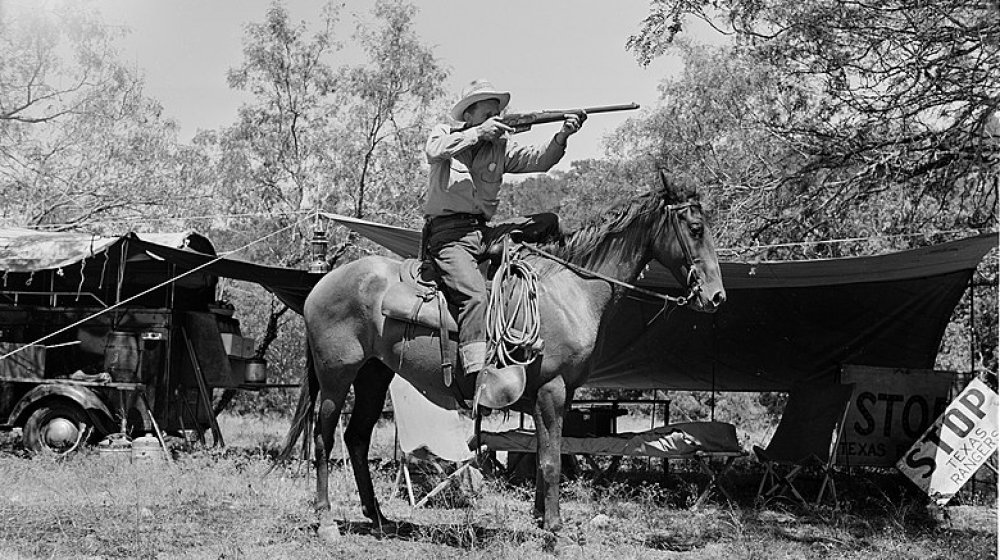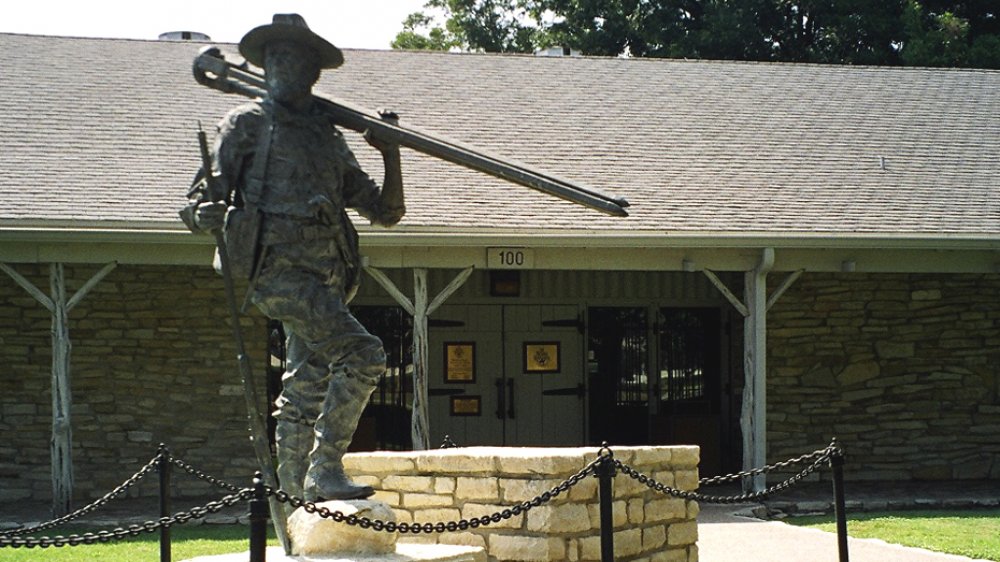The Incredible True Story Of The Texas Rangers
We may receive a commission on purchases made from links.
Yes, it's possible for someone in the modern day to say "I'm a ranger" when referring to something other than their class in Dungeons and Dragons, or that one time they really wanted to spend a summer residing in an Alaskan national park to do some soul-searching. Of course, we're talking about none other than the state where nothing is small: Texas. Yes, Texas Rangers are real, all right, and you can even browse salaries, benefits, educational requirements, and job hours for a government career as a Texas Ranger on The Balance Careers.
While a "day in the life of" may not be as glamorous as Chuck Norris delivering roundhouse kicks to the jaws of '90s TV ruffians, the small cadre of elite Texan police plays an actual, prominent role in the state's law enforcement and criminal investigation, kind of like a Texas-only FBI (except with more Winchesters and horses). According to the Texas Department of Public Safety, each of the 234 full-time Rangers, regardless of their position within the organization, help solve violent crime, organized crime, white collar crimes, missing person cases, help patrol the Texas border, work in conjunction with other law enforcement agencies, and numerous other wide-reaching duties.
It's easy to see why, if any place, Texas would be the birthplace of a nearly mythical squad of rugged frontiersmen conquering a lethal and harsh land through the use of grit and firearms. Of course, the reality of their history is a bit more complex, and ultimately troubled.
Because the eyes of the ranger are upon you
The history of the Texas Rangers can be traced back to Mexico winning its independence from Spain in 1821, as described on Britannica, and the messy relationship between the fledgling Republic of Mexico, the Americans it encouraged to settle in its northern territory of Texas (Texians), people of mixed Native American and Mexican ancestry (Tejanos), and Native Americans like the Apache. Ultimately, Texas broke away from Mexico, and the War of Texas Independence resulted in the founding of the Republic of Texas in 1836, which lasted until 1845, when Texas joined the United States. It was during this time of rough-and-tumble survivalism that the Texas Rangers were formed in 1836, as recounted by the Bullock Museum.
Armed in hardcore fashion with a rifle, a pistol, a knife, a blanket under their saddles, salt, ammunition, and enough tobacco to last a month, the Rangers roved independently, on dispatch from Texas empresario Stephen F. Austin. Originally, their role was to combat "errant thieves united with Indians" and essentially fill the gap in the region's law enforcement. Austin himself paid for the original 10 Rangers out of pocket, and after that they were comprised of volunteers who patrolled the Texas plains for a bit before returning to their original lives.
According to History, numerous famed Rangers have risen to prominence, including Ben McCulloch, friend of the actual Davy Crockett, and John B. Armstrong, who captured famed murderer and gunslinger John Wesley Hardin.
New trouble in the old west
As cited by the Texas Ranger Hall of Fame and Museum, "A Ranger is an officer who is able to handle any given situation without definite instructions from his commanding officer, or higher authority." As romantic as such descriptions are, such ethos doesn't come without its setbacks. The Rangers' mythic luster has been lost in recent years to historical documentation. Under their untouchable sheen is a long history of injustices, brutality, violent policing, racism, and xenophobia against non-Texans.
One example is 2020's Cult of Glory: The Bold and Brutal History of the Texas Rangers, an incredibly well-researched, 400-page tome by Doug Swanson, which chronicles a contrary perspective to history's idealized notion of the brave, valiant Texas Rangers. Called Los Diablos Tejanos by Mexicans, the Rangers, he cites, became known as marauding killers to those along the Texas border, as described in Texas Monthly. Among other atrocities, in 1855 they looted and set fire to the Mexican town of Piedras Negras while in search of bounties, which later forced the US government to pay reparations. In response to Swanson's book, Texas Monthly further reports, a 12-foot, bronze statue of Texas Ranger Captain E.J. "Jay" Banks was taken down from Dallas Love Field airport.
The PBS documentary Porvenir, Texas, also exposes the Rangers' 1918 massacre of 14 unarmed Tejanos. As stated by the Texas Tribune, the film was written by Arlinda Valencia, a resident of Monahans, Texas, whose great-grandfather Longino Flores was murdered in the massacre.


